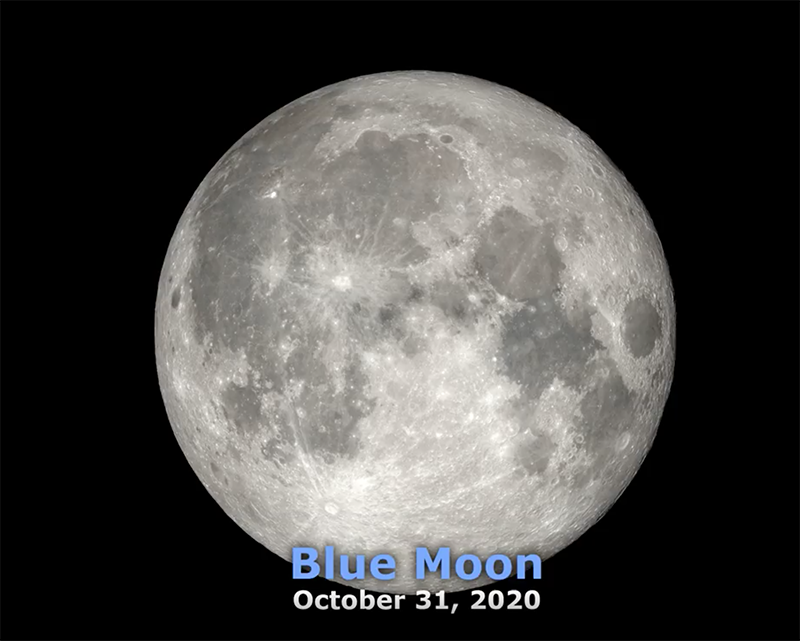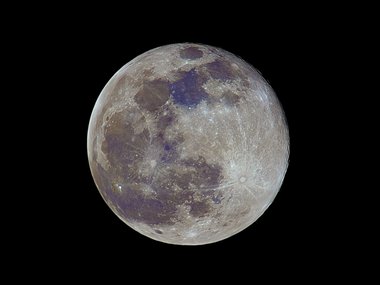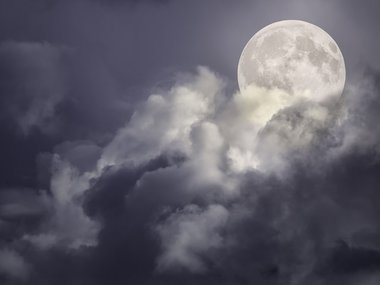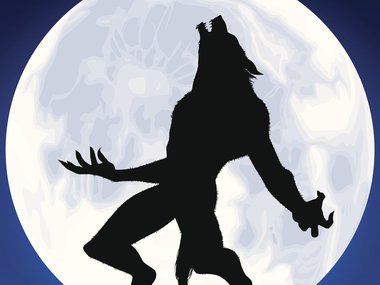Halloween's Blue Moon: Is It from Water?
Boo! Are you ready for tomorrow? It's Halloween and it's a full moon. As our astronomer Justin Bartel has been asking during planetarium shows in the Dome this week ... what's the worst that can happen? Ok, it's still 2020 so maybe don't answer that! There's been some interesting moon news recently so we thought we'd have Justin tell us all about it.
The full moon on October 31, 2020 is actually the second full moon of October, so some might even call it a "blue moon," a phrase commonly used to describe the second full moon in a calendar month. (If you're curious, there are lots of these moon names.) But recent news might have you thinking the moon is blue for another reason: water.
On Monday, Oct. 26, NASA revealed new findings from SOFIA, the Stratospheric Observatory for Infrared Astronomy, which uses a telescope mounted in a modified Boeing 747 jetliner taking observations while the plane is in flight. Those findings indicated there was water on the sunlit surface of the moon.

Water on the moon isn't a new discovery. It's long been known to exist in so-called "cold traps," permanently shaded regions near the poles of the moon. NASA even intentionally crashed a spacecraft into one of these cold traps in order to loft debris above the surface to measure how much water was present. But because these are places the sun doesn't shine, it's cold -- a couple hundred degrees below zero -- and so ice shouldn't be a big surprise.
What's different this time is that water was detected in sunlight, where lunar temperatures climb to a couple hundred degrees above zero. When you reach those temperatures on your stove, water boils away, so what's going on here? Well, in short, there's barely any water. We're talking about a few water molecules bound up with the minerals that make up the rocks on the moon's surface, perhaps created as part of ongoing chemical reactions involving the solar wind and micrometeoroid impacts. Such hydrated minerals are common on airless bodies like the moon (#BetterKnowAnAsteroid) but it's good news for future exploration, as water is a precious resource for human explorers.
The new findings suggest that in some regions on the moon, water may be present at abundances of about 100-400 parts per million. This aligns well with findings from last year suggesting that water could be present in the upper layer of lunar regolith at level around 200-500 ppm. That means that if you want to fill up a 16 oz (pint) glass with high quality moon H2O, you need to extract every water molecule from a metric ton of lunar soil.
So, sticking with Halloween references, calling the moon "bone-dry" colloquially is still OK, in our astronomer's humble opinion. Though it's a bit of an insult to bones, which Google says are about 25% water by weight, while the upper few centimeters of lunar regolith is 0.02-0.05% water by weight. Now there's a creepy thought: if an astronaut really needed water on the moon ... perhaps that's the story for next year's Halloween moon post!
Until then, take a look at the moon this weekend and watch out for blue werewolves.
The Museum is hard at work helping you to discover your world despite dramatically reduced financial resources. If you'd like to help us continue this work, click here to learn how.


